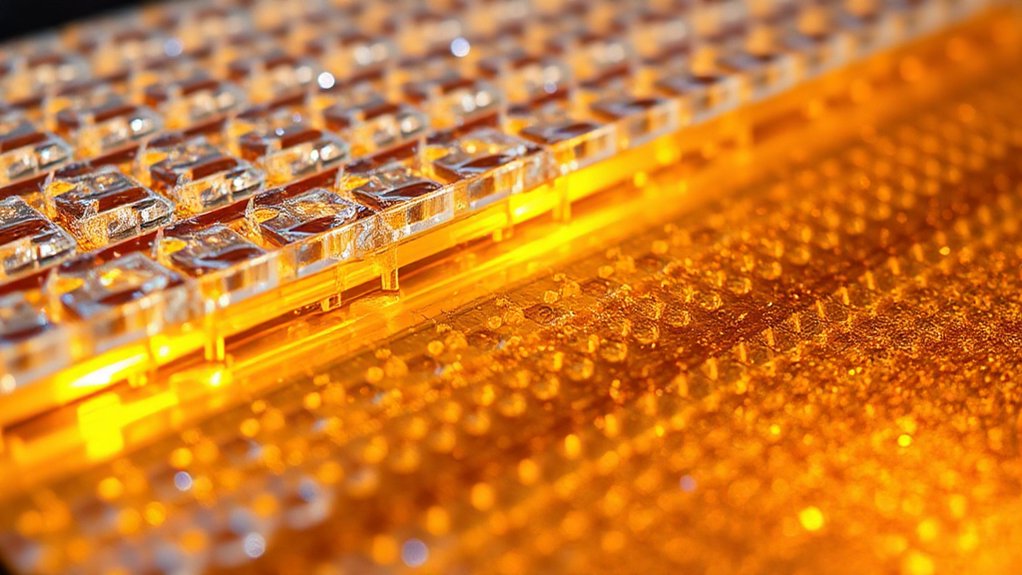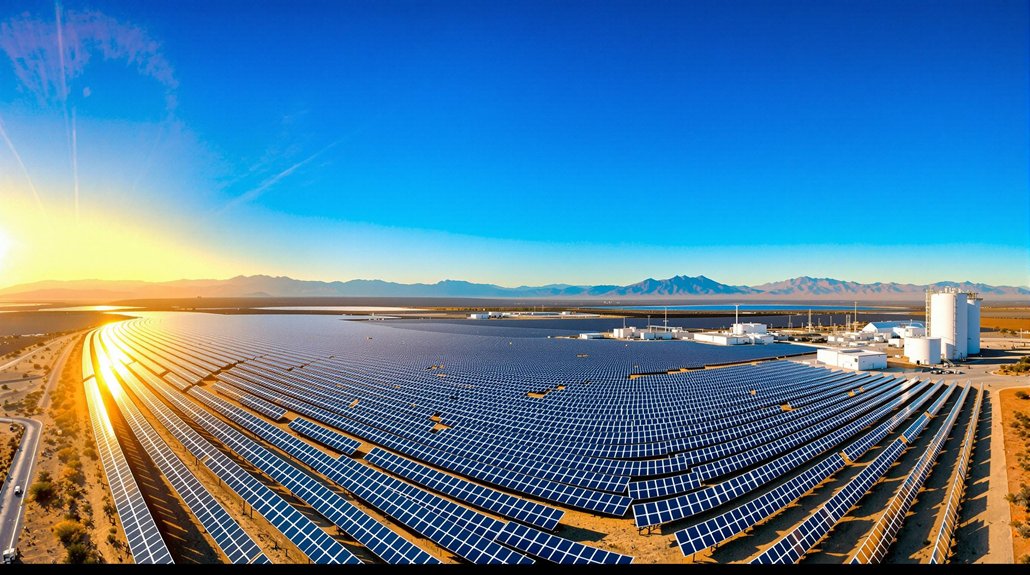While researchers have been tinkering with perovskite solar cells for years, molecular dipole engineering is now revolutionizing the field. It’s not just fancy lab talk anymore—real results are popping up everywhere. Carbonyl additives with strong molecular dipoles are dramatically enhancing film passivation. The stronger the dipole, the fewer defects. Pretty simple math, really.
These dipoles aren’t just showing off in lab tests. They’re delivering the goods with efficiencies up to 23.20% in standard cells. Even more impressive? Large-area modules (a whopping 14 cm²) hitting 20.18% efficiency. And they actually last, even in conditions that would normally destroy these finicky materials. Turns out those dipoles know what they’re doing. The tunable bandgaps of perovskite structures between 1.2–2.3 eV make them uniquely suited for dipole engineering applications.
Self-assembled monolayers (SAMs) are another dipole superstar. They’re transforming interfaces like a home renovation show—improving everything from charge transport to mechanical strength. Researchers can now mix and match SAMs with different dipole moments to fine-tune energy levels. The NiOx modification using 2PACz and MeO-2PACz SAMs at 3:1 ratio isn’t just scientific jargon—it’s a breakthrough recipe for better devices.
The real magic happens at those buried interfaces. Nobody sees them, but they’re where the action is. Tailored organic molecules with engineered dipoles optimize these invisible boundaries in P-I-N structured cells. Recent research from Qingdao University scientists has demonstrated comprehensive understanding of this passivation mechanism. The result? Higher voltage, better fill factors, less recombination. Basic stuff once you get the hang of it.
Buffer layers containing these dipoles create seamless, defect-free interfaces. They’re replacing traditional materials like BCP, and doing a better job. Mechanical flexibility gets a boost too. Dipoles in additives like –CN groups actually release strain in the films. Less stress means fewer cracks. Fewer cracks mean longer-lasting cells.
Bottom line: molecular dipoles are the unsung heroes making perovskite cells actually worth the hype. Finally.
References
- https://pubmed.ncbi.nlm.nih.gov/36973169/
- https://academic.oup.com/nsr/advance-article/doi/10.1093/nsr/nwaf150/8119417
- https://advanced.onlinelibrary.wiley.com/doi/10.1002/adfm.202510400
- https://pubs.acs.org/doi/10.1021/acsenergylett.5c02004
- https://www.nature.com/articles/s44296-025-00073-9
- https://pubs.rsc.org/en/content/articlelanding/2023/ee/d3ee02569a









